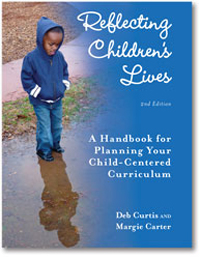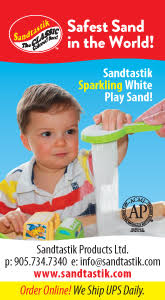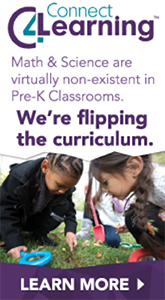ExchangeEveryDay Past Issues
 << Previous Issue
| View Past Issues | | Next Issue >>
<< Previous Issue
| View Past Issues | | Next Issue >> -Randy Pausch, author of The Last Lecture
In a 2014 newsletter of the Children's Community School in Philadelphia, founder Merryl Gladstone talked about her struggles with gun play in early childhood programs. She shared some insights from Elizabeth Criswell:
"She explored zero-tolerance gun play policies and shared how and why she tried to create space in her early childhood classroom for gun/weapon play. It was eye opening and a relief to hear her ideas and experiences. Elizabeth shared that she decided to change the zero-tolerance policy in her classroom because she felt first and foremost, it wasn't working. It was fostering a culture of dishonesty in her classroom. In having a zero-tolerance policy, Elizabeth wondered what message she was sending to children about their imagination and what message she was sending about the difference between real and pretend.
"She turned to research and learned that gun or weapon play is a universal truth in early childhood. Studies where gun play is permitted show a short spike in aggressive behavior, but then this behavior notably recedes as the games are allowed to progress. Lastly, her research affirmed that 'aggressive,' rough and tumble play, play fighting have been consistently linked to increased social competencies. In the end, Elizabeth found that as it was in the studies she read, when gun play is allowed and is treated like any other type of play, it eventually moves from high interest to the periphery.
"Play is a tool that children use to explore and know their world. When children are given the chance to explore and play with weapon play, it eventually gets played out. They have explored it and they are not as driven to explore it. It seems to me a better outcome then if we are to deny them the chance to explore an issue they are curious about and as a consequence they feel they have to hide their interest or curiosity."
Contributed by Kirsten Haugen
 Make the complex task of creating a child-centered curriculum easier with the practical guidelines and ideas in this updated and expanded handbook. Learn how to sharpen your observation and documentation skills, set up your space, and transform your teaching to reflect children's interests and needs. Insightful classroom stories, assessment tools, checklists, comparative charts, and activities encourage new approaches and self-reflection as you plan your curriculum and put it into practice. Addressing new standards in early education, two new chapters focus on teaching academics in a meaningful way and guiding children as they play and learn.
Make the complex task of creating a child-centered curriculum easier with the practical guidelines and ideas in this updated and expanded handbook. Learn how to sharpen your observation and documentation skills, set up your space, and transform your teaching to reflect children's interests and needs. Insightful classroom stories, assessment tools, checklists, comparative charts, and activities encourage new approaches and self-reflection as you plan your curriculum and put it into practice. Addressing new standards in early education, two new chapters focus on teaching academics in a meaningful way and guiding children as they play and learn.




Comments (20)
Displaying All 20 CommentsTactical Edge Hobbies
Brisbane, Brisbane, Australia
Nice stuff you shared here. Toy guns are toys which imitate real guns, but are designed for children to play with. From hand-carved wooden replicas to factory-produced pop guns and cap guns, toy guns come in all sizes, prices and materials such as wood, metal, plastic or any combination thereof. Many newer toy guns are brightly colored and oddly shaped to prevent them from being mistaken for real firearms.
Tactical Edge Hobbies
Brisbane, Brisbane, Australia
The post you shared here is very informative. From hand-carved wooden replicas to factory-produced pop guns and cap guns, toy guns come in all sizes, prices and materials such as wood, metal, plastic or any combination thereof. Many newer toy guns are brightly colored and oddly shaped to prevent them from being mistaken for real firearms.
Tactical Edge Hobbies
Brisbane, Brisbane, Australia
The post you shared here is very informative. From hand-carved wooden replicas to factory-produced pop guns and cap guns, toy guns come in all sizes, prices and materials such as wood, metal, plastic or any combination thereof. Many newer toy guns are brightly colored and oddly shaped to prevent them from being mistaken for real firearms.
Tactical Edge Hobbies
Brisbane, Brisbane, Australia
Toy guns are toys which imitate real guns, but are designed for children to play with. From hand-carved wooden replicas to factory-produced pop guns and cap guns, toy guns come in all sizes, prices and materials such as wood, metal, plastic or any combination thereof. Many newer toy guns are brightly colored and oddly shaped to prevent them from being mistaken for real firearms.
Tacticaledgeau
ormeau, Queensland > Brisbane Metro, Australia
Nice post you shared here. From hand-carved wooden replicas to factory-produced pop guns and cap guns, toy guns come in all sizes, prices, and materials such as wood, metal, plastic or any combination thereof. Many newer toy guns are brightly colored and oddly shaped to prevent them from being mistaken for real firearms.
Little People Day Care School
Dunmore, PA, United States
I understand the research the statistics, the evidence-based truths, but they do not address the simple fact that once these children enter the public school setting the zero-tolerance policies exist.
I am currently living in an area that is a study in redundancy. Most districts give the first day of buck season off, but they are quick to suspend a child for making a thumb and finger "weapon". There is a collective political and patriotic respect for personal arms, but there is public insistence at punishment and removal of children for engaging in play that could potentially reflect violent tendencies later in life.
Despite wanting to incorporate more rough and tumble time and space, as well as more relaxed policy in my classroom it just will not fly. I explain to each family individually that kids will explore natural aggression and adult themes, but gun play is a no go. They will be given frequent reminders and redirection in the initial weeks in my program, but after that it is three strikes and you are out. First is a warning and redirect. Second you are asked to pick another area to play. Third, I move you and choose your play for the remainder of the day with a quick review of our no-gun rules and why. I then meet with the parent at pickup to explain that if it is allowed now, it will slip later and in our neck of the woods will and your child in a crisis ward for a psych eval.
I want to let kids be kids, but I have to prepare them for what they cannot control. Zero-tolerance policies exist and I want to protect them from making a silly mistake that can cause more pain and stress that one could imagine for themselves or their family. If I can get it across to them now that there are other ways to play then I will.
Preschool Facilitator
Kitchener, Ontario, Canada
My favorite quote from my favorite Early learning advocate/speaker Dan Hodgins is, "you can try to ban guns, but you can't ban a thumb and a finger" meaning you can say "we don't play guns here" but the kids will do it anyways using their hands as guns, or their food, or other toys in place of guns behind your back.
Gun play does not make a child more violent, just like playing with blocks doesn't make a child an architect.
Its just play. Gun play (and superhero play) provides children a place to experiment with being in control, being powerful. Play is the only time in a child's daily life where they are truly in charge and research shows that giving children these opportunities to be in control and in charge leads to better social skills, better self-regulation skills and higher self-confidence.
Gun play simply makes adults uncomfortable because of our own experience and knowledge of the world. Children aren't reenacting war scenes and terrorist attacks. They are just playing.
Self-employed
Dallas, TX, United States
Gun play, again, is like any other play theme. It's exciting for awhile, then it becomes passé. If an issue would come up, we would deal with it, on a case by case basis. Lots of teaching and learning opportunities around gun play. Some classes never bring it up.
Self-employed
Dallas, TX, United States
Gun play, again, is like any other play theme. It's exciting for awhile, then it becomes passé. If an issue would come up, we would deal with it, on a case by case basis. Lots of teaching and learning opportunities around gun play. Some classes never bring it up.
Eugene, OR, United States
Having sent this one into EED, I am thrilled to read through the thoughtful and heartfelt comments here because most often discussions on gun play end up highly polarized, as the phrase "zero-tolerance" suggests. I appreciate Linda Crisalli's thoughtful rebuttal as much as I appreciate the ideas raised in the original article, especially with respect to finding opportunities for conversation. The comparison to intercourse is apt, as it mirrors our popular culture as well, where killing and violence are a part of games and entertainment, but sex is considered offensive.
I would like to hear additional perspectives and ideas on how we have these conversations with children. Whether we say gun play is okay or not, how do we have conversations with children that extend rather than extinguish their thinking, self regulation and compassion?
And yes, I second Edna Ranck's suggestion for an article on the topic, perhaps from multiple perspectives.
Kids on the HIll Preschool
Corte Madera, CA, United States
With the amount of gun violence in schools in this country, we tell our children it is against the law in California to have guns at school. We want them to understand and experience school as a safe and protected place. There are many ways to have play that includes some sort of rough and tumble. Even the pretend animals in our outdoor classroom are known to roar and fight at times!
OMEP-USA
Washington, District of Columbia, United States
I appreciate Kirsten's thoughtful EED and LH's comments. I do not recall any gun play in the c.c. center I directed from 1971-1978. I can well understand the need to address it in today's world. When my sons were preschoolers in the 1960s, we didn't give them toy guns, but we noted they found other objects to use as guns, including their hands! And I still remember that when I was 11, I bought a cap pistol and played "cops & robbers" with friends. I have never had a gun, even when I lived alone in a somewhat isolated location in New Jersey. I think an article on gun play in Exchange would be a timely thing to do.
Kirkland, WA, United States
I have been working with and in behalf of young children and their families for almost 47 years. It has been my observation that the children who engage in excessive TV watching, violent video games, super hero play and/or gun play/weapon play are, with very few exceptions, the same children whose general behavior is disturbingly aggressive, disruptive, and destructive (and they get expelled from child care on a regular basis and have trouble in school when they get older). Does this mean that every child who points his/her finger at another child and says "bang-bang you're dead" will grow up to be an ax murderer? No, of course not (although the converse is usually true). That being said, I have serious concerns with the notion of allowing or even encouraging young children to pretend to end a life (but only if they ask the other children's permission to kill them before-the-fact). If they wanted to pretend to have intercourse with one another, their teachers would surely tell them it is inappropriate and stop it immediately---why should pretend murder be any different? There is another important point that is being missed in discussions on this subject. I do not believe that engaging in violent gun/weapon play is simply "a universal truth of early childhood," because not all children do so. It is undoubtedly true that some of the children who obsess with violent play themes have experienced or witnessed real violence. And some get it from TV, video games and movies. For many others, the cause is a little less obvious. These are the children whose days are completely choreographed by the adults in their lives. From the time they wake until they go to sleep at night, someone is continually telling them what to do and what not to do. They have literally no choices. Research has been telling us for years that children learn best and develop social/emotionally best through free exploration and child-initiated play, but this isn't happening in the homes and classrooms of many of the children who choose violent play themes when they are on the playground. Developmentally, this is the age range when children should be developing their sense of self as they become progressively more independent and autonomous. Food for thought: If these children were given as many reasonable choices as possible, plus enough time and space to make those choices, they could develop a healthy sense of personal power without feeling the need to pretend to murder someone.
Head Start
Toledo, Illinois, United States
I feel it is part of our culture in rural area where I live and have always felt gun play was not a threat but role playing just like dressing up to be like mommy or daddy, etc. A good time to start to implement gun safety to children at an early age and not make it such a "taboo" subject that peaks curiosity and behind the scene experimentation that can cause great harm even death. Lets teach our young the reason and best practice for the use of guns.
Head Start
Toledo, Illinois, United States
I have always felt that guns are a part of our everyday life in rural Illinois. It is part of our culture. I feel they should be allowed to have gun play as you can also start to implement gun safety from their very young age. I agree and am glad to see that someone has started to put this into their daily lesson plans.
Kindercare
Stoneham, MA, United States
Very Interesting. I would like to see what happens when people finally figure out that aggression is completely natural.
If we want a world of total peace, the human animal will have to evolve to that. No man made learning structures are going to be able to expedite this process.
J
Marine Corps
Jacksonville, North Carolina, United States
It is good to read a more realistic attitude towards gun play than the often stated "zero-tolerance". Gun violence is abhorrent. However, many gun owners are hunters or target shooters and practice safe usage of these guns. We need to teach children gun safety and discourage young children from touching a gun and to notify an adult when they find a gun. Living and working on a mlitary instalaltion means guns are a part of the parents' work. Telling military children "guns are bad" gives inappropriate messages regarding their parents' work and is dishonorable to their military service. This is a tough issue which has many sides to consider.
Thurgood Marshall Child Development Center
Washington, DC, United States
My concern is the child finding a real gun and feeling it's OK to shoot when children are allowed to pretend they have guns at school. I am a strong believer in communicating to children that real guns hurt people and we are gentle with friends in child care.
Chicago, United States
This is such a relevant issue in Chicago where gun play is part of many children's daily realities. While intellectually I can understand and have seen how creative play and working through emotions such as aggression with gun play can be such an important activity. However I always feel a deep pull to thinking about what gun play at school can translate to in the community or at home.
The above commenter from Milwaukee hit such an important theme. How do we use creative and dramatic play opportunities to teach safety in 'the real world'? Perhaps if I had seen this model I would be more open and flexible in my thinking.
My first thought is always to the health and safety of children. Maybe by leaning in, supporting gun play, and guiding it to be a teachable moment the children can play and explore while also developing their safety skills?
Milwaukee, Wisconsin, United States
In a previous childcare program I never concerned myself with guns, it was not an issue. The children did not play guns.
About 18 months ago I switched programs. In this program gun play is very prevalent. Initially I was unsure how to react to the gun play. After observation and getting to know the children and families I realized that guns and gun violence is a very big part of the children's world. They watch it on TV, see it on the street outside their homes and in our city gun violence is on the news every night.
It wasn't until we had a shooting near the child care center that I decided we needed to do more teaching than telling. If we want to change the way children manage guns we need to be teaching gun safety and appropriate play. After all, we are teachers.
I also did some historical research. The gun play of children in 2016 is no different than gun play in the 30's, 40's, 50's, etc... In those times children played "cowboys and Indians," "cops and robbers," and "war." This is not a new phenomenon and not unique. We just view it differently. It's time to step up and teach, not tell.
Post a Comment